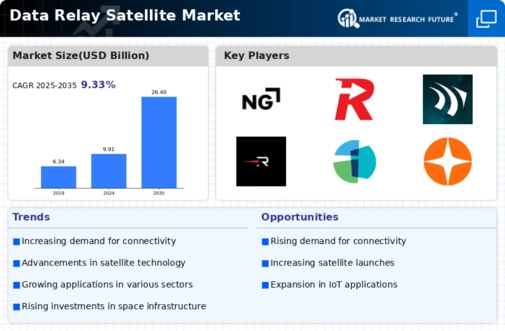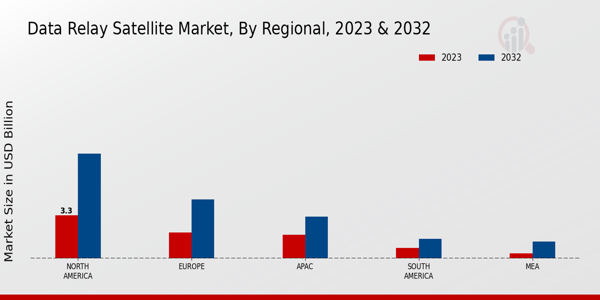The Data Relay Satellite Market is characterized by a dynamic and competitive landscape shaped by technological advancements and increasing demand for reliable satellite communication services.
As organizations across various sectors, including government, military, and commercial enterprises, seek efficient solutions for data transmission, the market has witnessed a robust influx of players aiming to capture market share.
Factors such as the increasing need for high-speed data transfer, connectivity, and enhanced communication capabilities have further intensified competition among key players.
Companies in this market are focusing on innovation, strategic partnerships, and expanding their geographic reach to establish a prominent presence in the industry.
Northrop Grumman has established itself as a key player in the Data Relay Satellite Market, driven by its strong technological prowess and commitment to advancing satellite communication systems.
The company's deep-rooted expertise in developing and integrating satellite technologies enhances its competitive position, allowing it to deliver reliable and scalable solutions tailored to meet diverse customer requirements.
Northrop Grumman's focus on research and development underlines its capacity to innovate in the field, allowing it to maintain a strong market presence.
Additionally, the company's collaboration with various governmental and commercial entities enables it to leverage synergistic partnerships, further solidifying its role as a leader in the data relay satellite sector, which is critical for ensuring seamless data flow across networks.
SES S.A. is another significant entity in the Data Relay Satellite Market, renowned for its advanced satellite communication solutions that address the evolving needs of customers worldwide.
With a diverse portfolio of satellite services, SES S.A. focuses on optimizing connectivity and improving data transmission quality across various regions. The company possesses a strong fleet of satellites and employs cutting-edge technology to enhance service offerings, positioning itself as a reliable partner in the market.
Furthermore, SES S.A.'s strategic initiatives, including expanding its satellite network and upgrading existing platforms, demonstrate its commitment to remaining at the forefront of the industry.
This focus on innovation and customer-centric solutions allows SES S.A. to compete effectively within the dynamic landscape of the Data Relay Satellite Market.























Leave a Comment